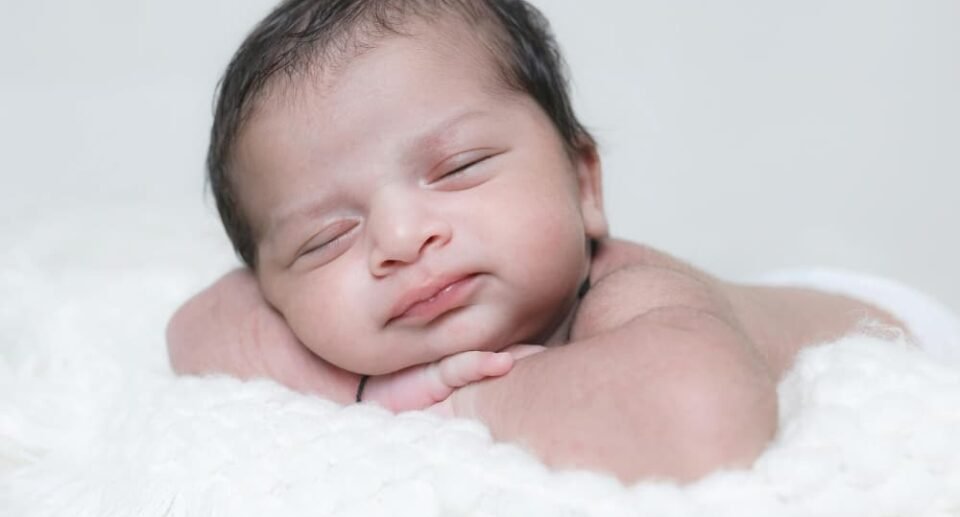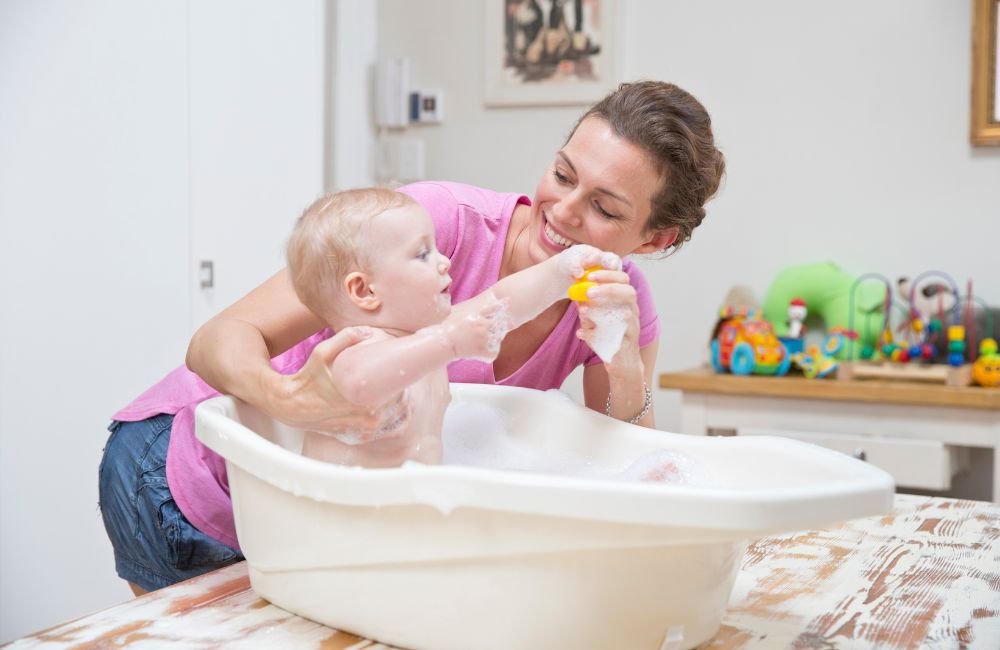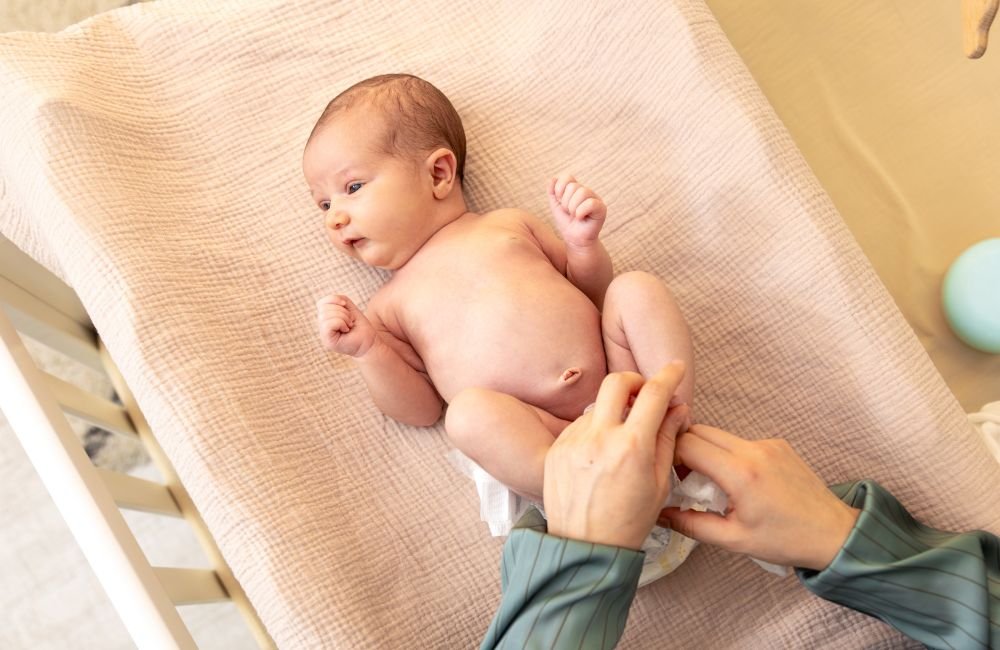Why Do Babies Smile In Their Sleep?

Have you ever seen a sleeping baby and noticed that sweet little smile on their face? It’s a heart-melting moment of magic. Behind those ravishing smiles, do you know what is there? Some smiles are reflexes – those adorable twitching in deep sleep. Mothers often wonder if their babies are dreaming of angels or happy childhood scenes. Let’s get started.
Why Do Babies Smile in Their Deep Sleep?
Babies often surprise us with sweet smiles while they sleep, leaving parents curious about what’s happening in their tiny minds. These smiles can mean different things from simple reflexes to the beginning of emotional connections. Let’s explore the reasons behind those adorable night-time grins.
Reflex Smiles
These reflex smiles are little smiles that babies make without feeling any emotions. These smiles happen because of activity in a part of the brain that we don’t control. You will often see these smiles in newborns, especially between 0 and 6 weeks old, during REM sleep. They are similar to other movements, such as kicking or twitching.
Social Smiles
Around 6 to 8 weeks, babies start to show genuine smiles. They can recognize faces and voices by this age. These smiles may come from happy dreams or familiar smells and comforting sounds. Smiling helps parents to make those sleepy smiles more meaningful.
Gas or Discomfort
You may be asking yourself, “Is my baby smiling from gas?” Sometimes, maybe, but not always. It’s to distinguish between smiles and smirks. If your baby’s fists are clenched, and you have a fussy rather than a happy baby, they might not be happy. Being able to recognize these signs makes it easier for chelsea parents to care for their children. Smiling in preterm infants can depend on their gestational age at birth.
When do Babies Start Smiling?
Babies born prematurely may take longer before they start smiling. Understanding this schedule can help parents anticipate their children’s growth and development.
Timeline of Smiling
- Reflexes Smile: At this stage, smiles are not a response to external stimuli but rather a natural reflex. You might notice these smiles often during REM cycles, particularly during sleep.
- Social Smiles: Around six weeks of age, babies start to develop social smiles that are intentional and responsive. This is when they start smiling in response to faces and voices that signal social engagement.
The Science Behind Sleep Smiles
REM sleep and its Importance
REM (Rapid Eye Movement) phase is vital for brain development, allowing for essential processes that support cognitive growth.
Dreaming in Babies
While newborns are unlikely to experience dreams as we understand them, older babies may react to stimuli from dreams. Their smiles during sleep might reflect these responses even if they aren’t conscious or intentional.
Brain Development and Emotional Expression
Smiling even during sleep plays an important role in strengthening neural pathways related to emotional expression. These early smiles help to lay foundation for social interactions and emotional connections as baby grows. Understanding the science can enrich parents’ appreciation of their baby’s developmental milestones.
Cultural Beliefs & Myths
Here are the following cultural beliefs and myths that should be considered:
Sweet Myths
We have seen across various cultures that suggest babies “talk to angels” while they sleep. This often reflects the innocence and purity of infants. Such highlights the wonder surrounding a baby’s early experiences and the mystery of their dreams.
Humorous Take
Many parents said, “Maybe they are dreaming of milk”. This humorous perspective captures the relatable experience of sleepless nights and the universal bond of parenthood, reminding us to find joy in little moments.
How to Encourage More Smiles (Awake or Asleep)?
To foster more smiles, interact with your baby during their awake periods. Here are effective ways to engage:
- Signaling: Use lullabies or playful songs. The sound of your voice can be incredibly soothing and may prompt smiles.
- Peek-a-Boo: Babies learn about object permanence in this time-honored game, which generates smiles and giggles
- Gentle Touch: Soft tickles, snuggles, and light caresses can elicit positive responses. Skin-to-skin contact is particularly soothing.
- Facial Expressions: Pull silly faces or make exaggerated expressions. Babies are great at mimicking and reacting to your mood, which means more smiles.
- Storytime: Reading to your baby — even an infant — can make you feel close and lead to charming reactions. Select books with bright pictures, movement, and rhythm.
Ways to Ensure Comfortable Sleep Conditions
Creating a soothing sleep environment can encourage smiles during sleep. Here are some tips:
- Swaddling your baby in a soft blanket can help them feel safe and secure, creating a familiar environment and allowing the baby to adjust their size and shape to match the changing pressure.
- Gentle noise, such as a white noise machine or a fan, can cover up startling sounds and foster better sleep.
- Make the sleeping area slightly dark to indicate that it’s time to unwind. If you must, use blackout curtains to create a lovely and quiet space.
- Ensure that the room temperature is comfortable place to sleep, 20-220 degrees is the recommended temperature.
- ·Set up a stable bedtime routine that can help establish to your baby’s body it is time to wind down.
Final Thoughts
There is a difference between reflex smiles at birth and social smiles at about six weeks, and this is crucial in identifying that your baby is developing normally. It’s essential to cherish these fleeting moments as a parent. All the smiles are also a wish to recount all the delights and miracles of childhood. Did your baby smile in his sleep? Share your story in the comments.

Aashley Kai is the Editorial Director of Chelsea Famous Parenting and a licensed expert in early childhood education. She holds a Master’s in Child Psychology from the University of Texas Southwestern Medical Center and has worked as a preschool teacher and child therapist. Since joining in 2024, Aashley has been dedicated to creating well-researched, trustworthy parenting resources. Her work helps parents and caregivers foster nurturing, educational environments for children. Outside of work, she enjoys hiking and photography, capturing nature from a child’s perspective.





